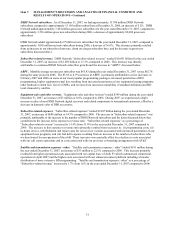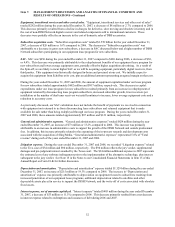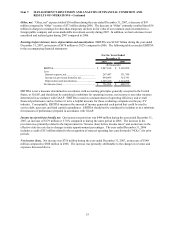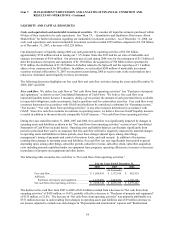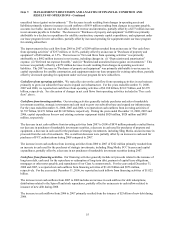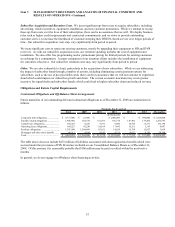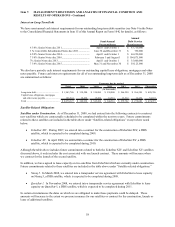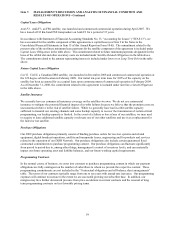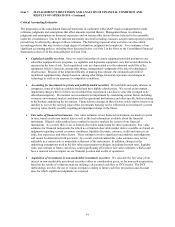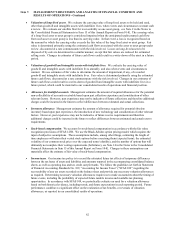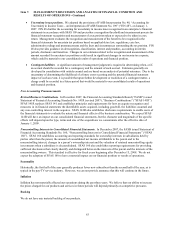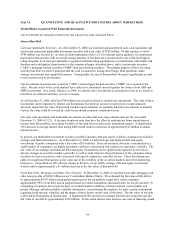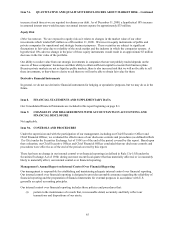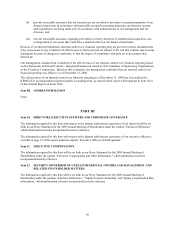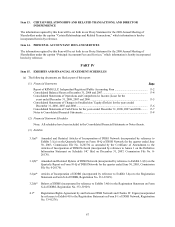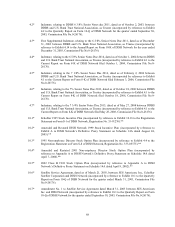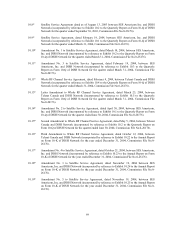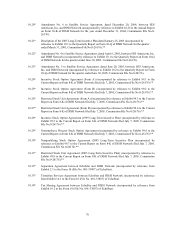Dish Network 2008 Annual Report Download - page 70
Download and view the complete annual report
Please find page 70 of the 2008 Dish Network annual report below. You can navigate through the pages in the report by either clicking on the pages listed below, or by using the keyword search tool below to find specific information within the annual report.Item 7. MANAGEMENT’S DISCUSSION AND ANALYSIS OF FINANCIAL CONDITION AND
RESULTS OF OPERATIONS - Continued
60
Future Capital Requirements
We expect to fund our future working capital, capital expenditure and debt service requirements from cash generated
from operations, existing cash and marketable investment securities balances, and cash generated through new
additional capital. The amount of capital required to fund our future working capital and capital expenditure needs
varies, depending on, among other things, the rate at which we acquire new subscribers and the cost of subscriber
acquisition and retention, including capitalized costs associated with our new and existing subscriber equipment
lease programs. The amount of capital required will also depend on the levels of investment necessary to support
potential strategic initiatives, including our plans to expand our national and local HD offerings and other strategic
opportunities that may arise from time to time. Our capital expenditures vary depending on the number of satellites
leased or under construction at any point in time, and could increase materially as a result of increased competition,
significant satellite failures, or continued general economic downturn. These factors could require that we raise
additional capital in the future.
From time to time we evaluate opportunities for strategic investments or acquisitions that may complement our
current services and products, enhance our technical capabilities, improve or sustain our competitive position, or
otherwise offer growth opportunities. We may make investments in or partner with others to expand our business
into mobile and portable video, data and voice services. Future material investments or acquisitions may require
that we obtain additional capital, assume third party debt or incur other long-term obligations.
We paid $712 million to acquire certain 700 MHz wireless licenses, which were granted to us by the FCC in
February 2009. We will be required to make significant additional investments or partner with others to
commercialize these licenses and satisfy FCC build-out requirements. Part or all of our licenses may be terminated
for failure to satisfy these requirements.
Recent developments in the financial markets have made it more difficult for issuers of high yield indebtedness,
such as us, to access capital markets at acceptable terms. These developments may have a significant effect on our
cost of financing and our liquidity position.
A portion of our investment portfolio is invested in asset backed securities, auction rate securities, mortgage backed
securities, special investment vehicles and strategic investments and as a result a portion of our portfolio has
restricted liquidity. Liquidity in the markets for these investments has been impaired in the past year and these
market conditions have adversely affected our liquidity. In addition, certain of these securities have defaulted or
have been materially downgraded, causing us to record impairment charges. If the credit ratings of these securities
further deteriorate or the lack of liquidity in the marketplace becomes prolonged, we may be required to record
further impairment charges. Moreover, the current significant volatility of domestic and global financial markets
has greatly affected the volatility and value of our marketable investment securities. To the extent we require access
to funds, we may need to sell these securities under unfavorable market conditions, record further impairment
charges and fall short of our financing needs.
Credit Ratings
Our current credit ratings are Ba3 and BB- on our long-term senior notes as rated by Moody’s Investor Service
(“Moody’s”) and Standard and Poor’s (“S&P”) Rating Service, respectively. Debt ratings by the various rating
agencies reflect each agency’s opinion of the ability of issuers to repay debt obligations as they come due.
According to Moody’s, a Ba3 rating indicates that the obligations are judged to have speculative elements and are
subject to substantial credit risk. According to S&P’s, a BB- rating indicates the issuer is less vulnerable to
nonpayment of interest and principal obligations than other speculative issues. However, the issuer faces major
ongoing uncertainties or exposure to adverse business, financial, or economic conditions, which could lead to the
obligor’s inadequate capacity to meet its financial commitment on the obligation.



